Group 2. Bailey, Elyse, Amyre
First full day in lovely Las Joyas! Many of our peers took great advantage of the first light of the morning, along with the chorus of local songbirds during the morning chorus at 6am! Our group, fortunately, took advantage of the early morning, and slept.
After finally waking up, and having a lovely pancake and fresh papayas breakfast, we started the days activities.
First thing right after breakfast was the ‘Official 2025 Jalisco Birdathon’! Goal is: identify as many bird species within a 2 hour limit, within the Las Joyas campus – attempting to explore diversity in function and form (e.g. insectivorous vs carnivorous vs granivorous vs frugivorous bills, wings for soaring, gliding, hawking, and gleaning) and to find as many different genera and families as we could. The campus boasts many spectacular forest edge vistas, which gave us an insight on the many bird species that flourish within the core reserve. We split off into teams, with our group taking a small, isolated section of the site north of the buldings, looking over a ravine, to see the birds flying by. Though we did see common species like the Common Raven, distance was our challenge, and lead to difficult ID along the forest edge. As we moved along, we ran into some of our competitors. Though this event was supposed to be a competition, we were not opposed to collaboration, and shared some identified species, and observed Slate-throated Redstart, and Crescent-chested Warbler together. From there, we ventured forth, observed a White-eared Hummingbird perched beautifully in a tree, and continued our journey, noting the species we see along the way.
In the midst of our journey, we observed a lizard carefully handled by Javier and Steve, to which it got its ‘paparazzi ‘moment, and Bailey scored an exclusive selfie with the celebrity!
At the end of the birdathon, our team had identified 10 species overall, not too shabby for a bunch of novice ornithologists! Though, compared to the winning teams 23 species identified, we’ll keep our expectations low in the future.
Following a quick debrief, we observed some Diploperennial Teosinte on the forest edge, allowing Clarisa to give her species presentation with a live(ish) specimen with her! We After this presentation, we broke for a break, but not without some interesting events occurring, notably a recently found female red-headed tanager, an endemic species to the area, unfortunately dead.
Anyway, we then had an exquisite ham and mash-potatoes lunch, and thereafter had another brief break, in preparation for our hike. As there had been a window mortality (a female red-headed tanager), Javier did a demonstration of tissue collection, and taxidermy, providing a unique learning opportunity.
After this, we collected our hiking material, and made our way to the mesophilous forest, starting our descent towards a small creek, noted to house tine leaf litter frogs in the Eleutherodactylus genus. Notably, with the high humidity, and low sunlight on the ground, this lead to plenty of epiphytic plant growth. From there, three frogs were briefly captured, photographed and released (VERY CAREFULLY), along with some nifty bioluminescent mushrooms. We then made our journey back up, observing changing species composition and habitats along the way, from cloud forests, to forest gaps, mixed-wood forests, and finally pine-oak forests.
Upon our return, Naida gave her species presentation, being on the aforementioned Eleutherodactylus frogs. After a lovely ensuing conversation, we had a meal of elegantly garnished hot-dogs. This brings us to this point which is writing this blogpost! A long, but thrilling day has concluded. Tune in tomorrow (but not exactly ‘cause these will be posted late) for our next adventures!
Adios!
En Español
Grupo 2. Bailey, Elyse, Amyre
¡Primer día completo en la encantadora estación de investigación Las Joyas! ¡Muchos de nuestros compañeros aprovecharon las primeras luces del amanecer, junto con el coro de pájaros cantores locales matutinos a las 6 am! Nuestro grupo, afortunadamente, aprovechó mejor dormir en la madrugada.
Después de que finalmente despertarnos fuimos a desayunar unos deliciosos panqueques acompañados de papaya fresca. Después, comenzamos las actividades del día.
¡Lo primero después del desayuno fue el “Birdathon” OficialJalisco 2025” ! El objetivo: identificar tantas especies de aves posible dentro de un límite de 2 horas en los alrededores de la estación Las Joyas, intentando explorar la diversidad en función y forma (por ejemplo, variedad de picos y asociación a la dieta para determinar dietas como de insectívoros versus carnívoros, granívoros versus frugívoros, tipos y forma de alas y estrategias de forrajeo ya sea para planear, cazar y recoger). Además de identificar los géneros y familias diferentes que pudiéramos. La estación, tiene muchas vistas espectaculares del borde del bosque, lo que nos dio una idea de las muchas especies de aves que prosperan dentro de la reserva principal. Nos dividimos en equipos, y nuestro grupo tomó una sección pequeña y aislada del sitio al norte de los edificios con dirección a un barranco, para observar los pájaros volando. Aunque vimos especies comunes como el cuervo, la distancia fue nuestro desafío ya que nos complicó la identificación de las especies en el borde del bosque. A medida que avanzábamos, nos topamos con algunos de nuestros competidores. Aunque se suponía que este evento sería una competencia, no nos opusimos a la colaboración, compartimos algunas especies identificadas y observamos juntos el pavito garganta pizarra y la reinita amarilla de pecho creciente. Desde allí, nos aventuramos un poco más y observamos el Colibrí Oreja blanca posado hermosamente en un árbol. Continuamos nuestro viaje, observando las especies que vimos a lo largo del camino.
En nuestro recorrido observamos también un lagarto cuidadosamente manipulado por Javier y Steve, al que se le dio su momento ‘paparazzi’, ¡y Bailey se tomó una selfie exclusiva con la celebridad!
Al final del maratón de aves, nuestro equipo identificó 10 especies en total, ¡nada mal para un grupo de ornitólogos novatos! Sin embargo, en comparación con los equipos ganadores que identificaron 23 especies, mantendremos nuestras expectativas bajas en el futuro.
Después de una breve sesión informativa, observamos algunos teosintles en el borde del bosque, lo que le permitió a Clarisa hacer la presentación de su especie con un ejemplar vivo (más o menos). Después de esta presentación, tuvimos un descanso, pero no sin que ocurrieran algunos eventos interesantes, en particular una tangara cabeza roja hembra encontrada recientemente, especie endémica de la zona, lamentablemente muerta.
De todos modos, luego comimos un exquisito almuerzo de jamón con puré de papa, y después otro breve descanso en preparación para nuestra siguiente caminata. Posterior al desayuno, con el ave muerta que chocó con una ventana (una tangara cabeza roja hembra), Javier hizo una demostración de taxidermia y recolección de tejidos, dándonos una oportunidad de aprendizaje única.
Después de esto, recogimos nuestro material para la caminata y nos dirigimos hacia el bosque mesófilo, comenzando nuestro descenso hacia un pequeño arroyo, conocido por alojar ranas del género Eleutherodactylus. En particular, con la alta humedad y la poca luz solar en el suelo, observamos como esto resulta en un gran crecimiento de plantas epífitas. Llegando al arroyo, capturamos, fotografiamos y liberamos tres ranas (MUY CUIDADOSAMENTE), además observamos unos ingeniosos hongos bioluminiscentes. Luego iniciamos nuestro regreso a la estación, observando cambios en la composición de especies y hábitats a lo largo del camino, desde bosque de niebla hasta claros de bosque, bosque mixto y finalmente bosques de pino encino
A nuestro regreso, Naida hizo la presentación de su especie, siendo las ranas Eleutherodactylus antes mencionadas. Después de una encantadora conversación, comimos perritos calientes elegantemente adornados. ¡Esto nos lleva al punto de escribir esta publicación de blog! Ha concluido un día largo pero emocionante. ¡Sintonízate mañana (pero no exactamente porque se publicarán tarde) para nuestras próximas aventuras!
¡Adiós!
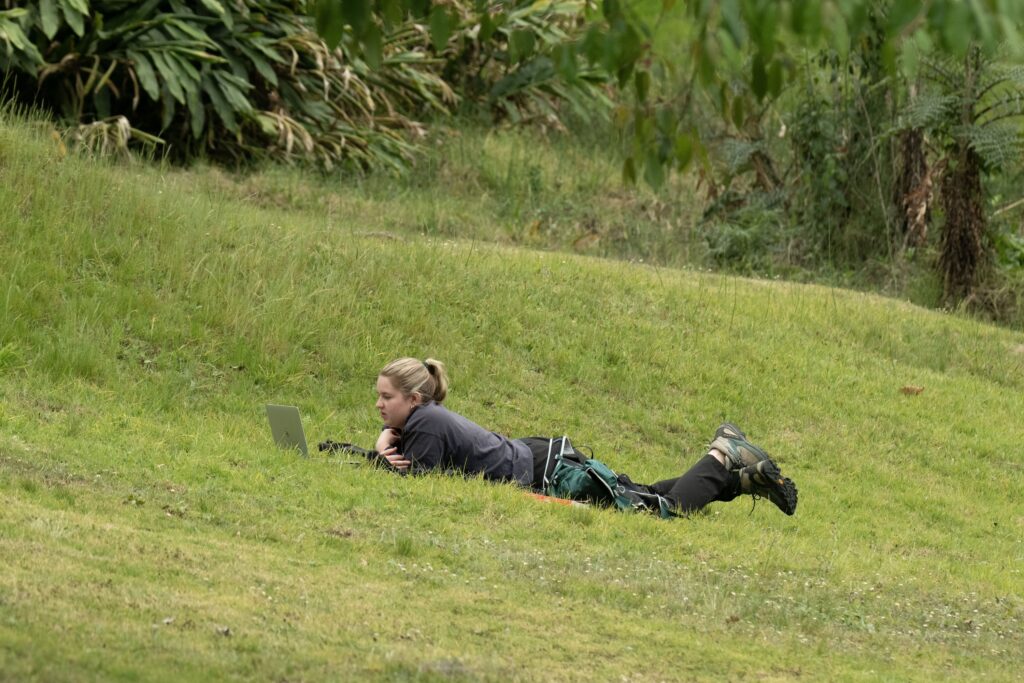
Alex practicing her seminar on the grass in front front of the comedor. Photo S.C. Lougheed
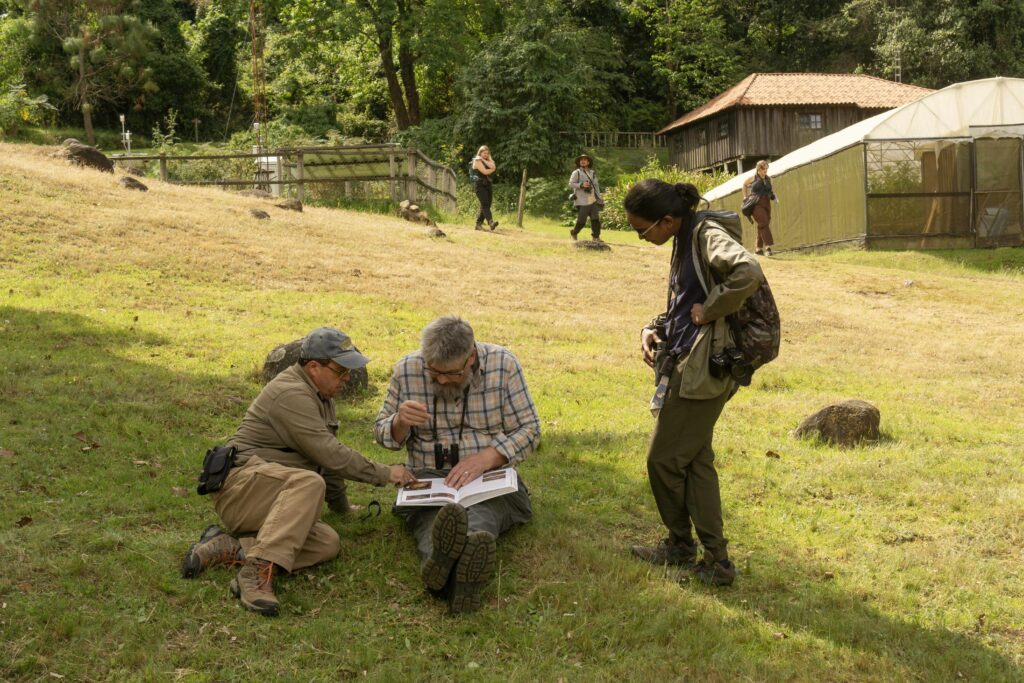
Keying out a find. Photo David Lougheed
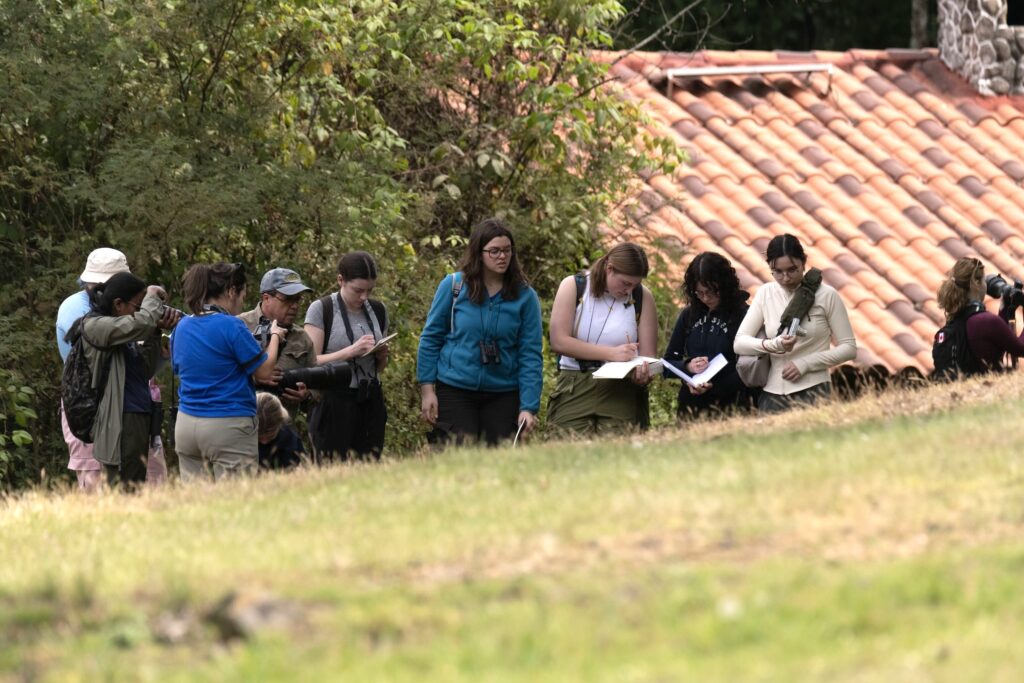
Photo shoot – subject below the ridge out of view. Photo David Lougheed
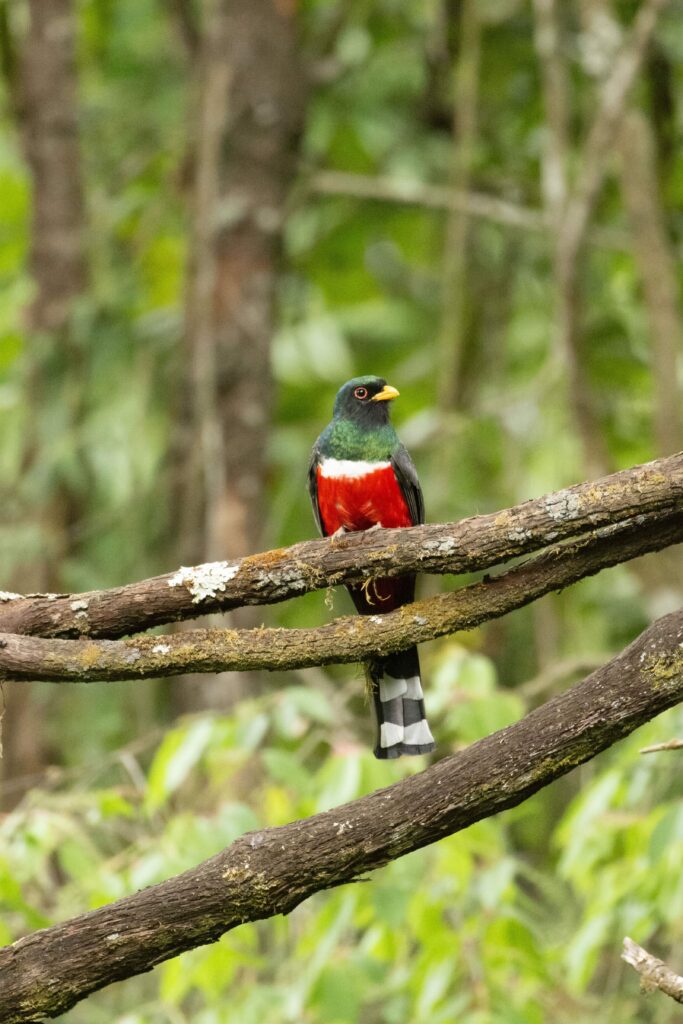
mountain trogon. Photo Mikaela
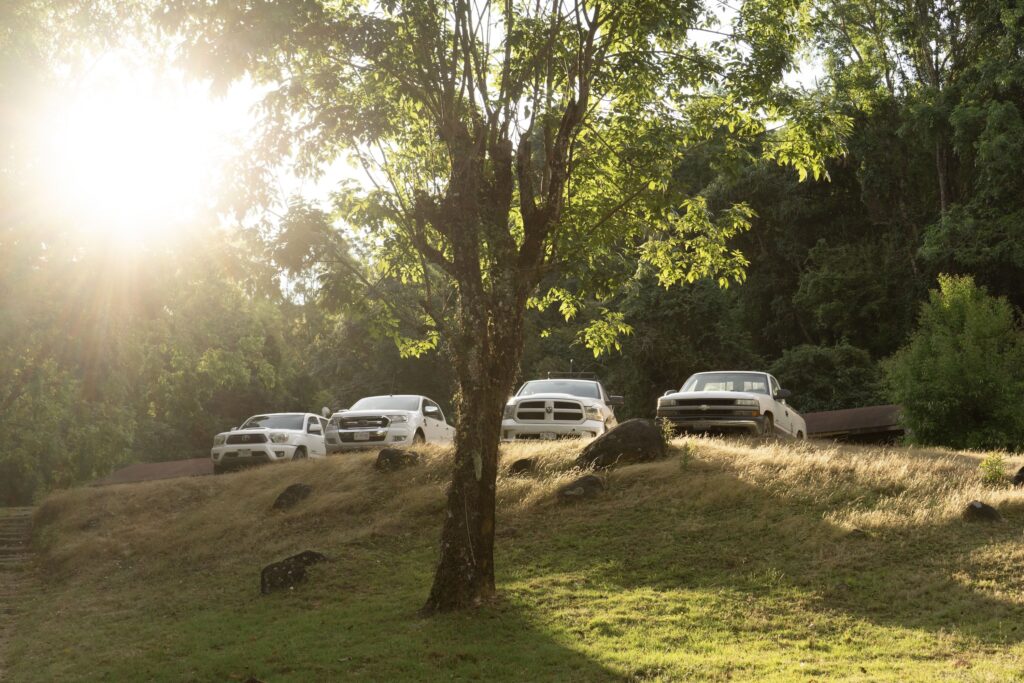
Our trusty ‘steeds’ Photo David Lougheed
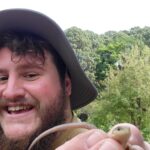
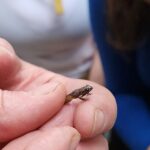
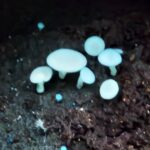
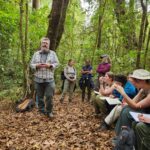

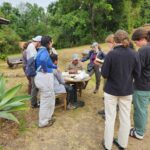

Leave a Reply